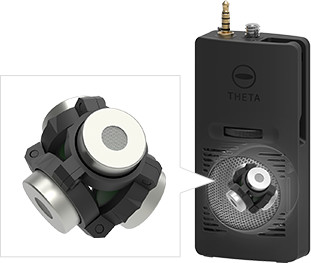
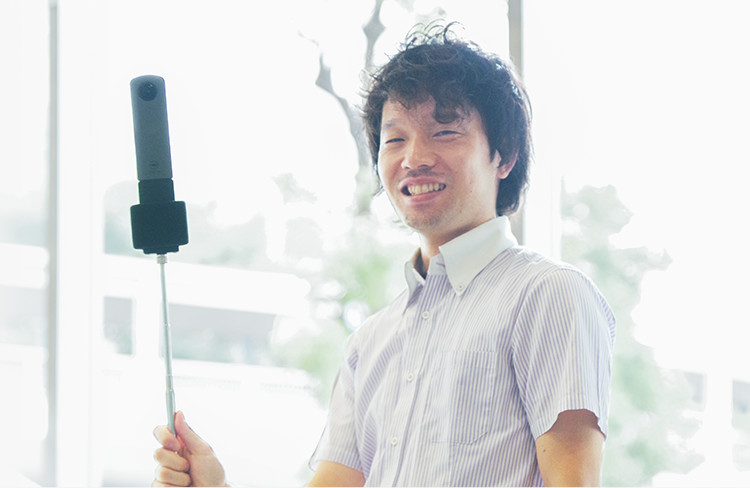
Vol.2
RICOH THETA Developer Interview
360°Spatial Audio,
3D Microphone TA-1
Ricoh Company, Ltd.
Takafumi Ohkuma
“External microphone equipped with an Audio Technica Corporation microphone unit”
What is the difference between the built-in microphone and the external microphone?
The built-in microphone is the first step for experiencing 360º Spatial Audio. It is available as a function that allows the user to easily experience sound. Since it has an extremely compact configuration, it is suitable for use when you want to “record people’s voices and easily record the mood of a place”. Although, due to its construction and weak bass, when using it outdoors, you will no doubt be concerned about wind noise in certain locations. That’s where we recommend you use the optionally sold 3D Microphone TA-1 when using the camera outdoors and you want to record high quality music.
What are the features of the 3D Microphone TA-1?
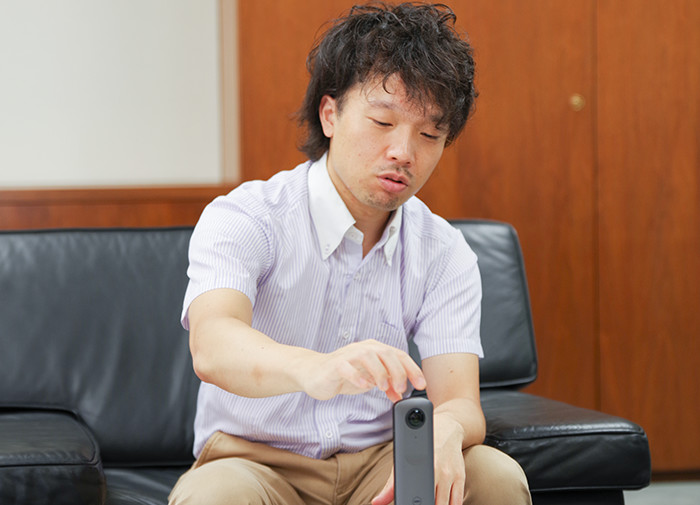
It uses a microphone unit from Audio Technica Corporation, a company that has the technology and expertise
in commercial microphones and headphones. Although a concept from Audio Technica Corporation, the
microphone’s biggest feature is its ability to record a softer, more natural sound, like the sound
actually heard by human ears.
Furthermore, high precision matching is performed on the sensitivity of the equipped 4 unidirectional
microphones when they are produced in Japan. The reason that matching is performed is to prevent sound
deviations from occurring such as an increase in sound from a specific direction when processing it within
THETA. Sound from the actual location is reproduced while maintaining stable audio characteristics. Since
the directional characteristics of each microphone element from Audio Technica Corporation is stable, when
the sound is captured in THETA, you can feel the directivity even smoother.
So, each microphone is larger than the one built into the camera.
The equipped unidirectional microphone element has a large aperture of diameter 10
mm. The element is large compared to the built-in microphone so it has the feature of being good with very
loud sound and it is difficult for sound to break up. It picks up bass sounds and records more natural
sound compared to the built-in microphone, and this enables you to feel the sound more realistic.
The 3D microphone being accidentally captured in the image is also kept to a minimum. After going to all
the trouble of shooting good sound and video, having the microphone appear unexpectedly in the 360º video
would greatly affect the image. At first we planned to place the microphone on top of the camera.
I think the 3D Microphone TA-1 is used mostly outdoors. What points were considered?
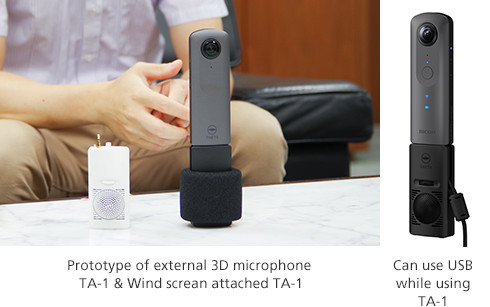
We have covered the microphone element in a metallic mesh for the purpose of protecting the element and
preventing wind sound when using it outdoors. We have also prepared a dedicated wind screen as an
accessory.
We have adopted a signal processing to reduce wind noise as much as possible for the built-in microphone.
However, it is more effective to physically cover it with a wind screen to prevent wind noise. When you
quickly want to use the camera outside, quickly recording with a single touch of a button is best with the
camera alone.
The bottom of the TA-1 has a tripod hole so when you are deliberately aiming to record high quality sound,
you should make use of this. There is also a guide for connecting a USB cable to the camera. It is now
possible to shoot while supplying power through the USB even with the TA-1 connected.
It will make me happy to see people enjoying the sound recorded with external microphone TA-1.
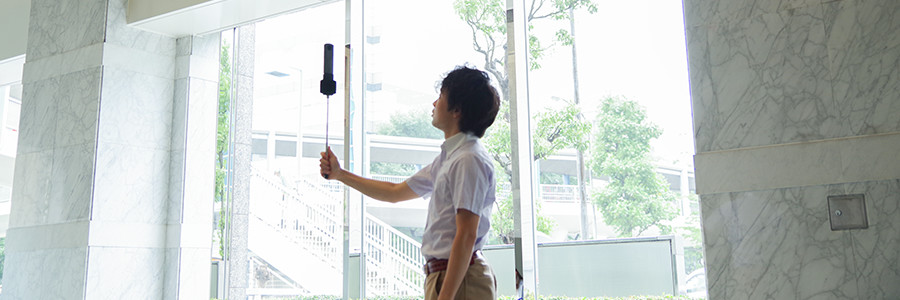
Profile
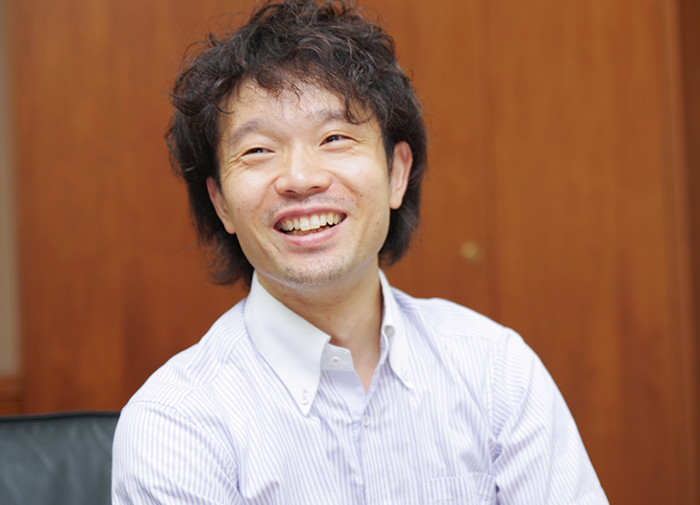
Ohkuma Takafumi
Ricoh Company, Ltd.
Industrial Product Division,
Advanced Technology Development Office
Joined Ricoh in 2006
While at university, engaged in research into environmental electromagnetic engineering
At Ricoh, has worked on compact digital cameras such as GR series, and on THETA electrical hardware
development (analog, systems), and is also in charge of software action specifications alongside the
hardware.
Enjoys playing tennis and saxophone regardless of holiday or work day.
*The contents written in this interview is based on the information as of Sep. 15th, 2017
